Nokia Maps 2.0 graduates and gets “my location” feature
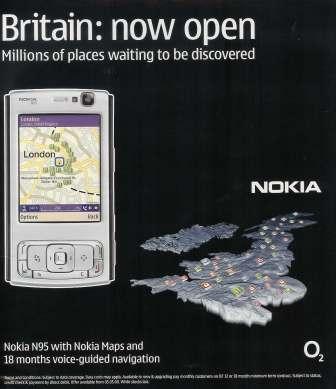
Welcome to All About Symbian readers – looks like we’ve had a flood of traffic from the post by Steve Litchfield titled Ruminations on cell-id location in Nokia Maps 2.0.
I have been using Nokia maps for some time now, and following the launch of their V2.0 beta at Mobile World Congress in Barcelona, I have been using it as I travel the world in conjunction with Google Mobile Maps (GMM).
A recent announcement (and heavy above the line marketing campaign – see above) has seen the Nokia Maps V2.0 graduate from beta to a full release.
The significant difference between Maps 2.0 beta released in Barcelona and the commercial release is the inclusion of a network (cell-ID) positioning capability – as per the Google Mobile Maps “my location” feature.
The blurb from the Nokia Betalabs site says
“It will position you really fast, usually within 5 to 10 seconds. It works indoors, on a bus or train. Network based positioning cannot be used for navigation since it is not accurate enough. However it works just fine for showing where you are (roughly) on the map. A pink circle in the map shows the accuracy of the position. When GPS fix is achieved, this is used instead of the Network based position, and the pink ring disappears. Network based positioning is now enabled on all A-GPS enabled devices.”
Having been one of the first to comment on the GMM my location product when they released in back in November, I immediately upgraded my Nokia Maps 2.0 beta on my Nokia 6110 and set out to compare Nokia Maps to Google mobile maps.
I deliberately turned off the GPS in the 6110 to do these tests, to see what the cell-ID database (also called base station almanac or BSA) was like between the two products.
Initial testing has shown that while the two data sources are different, the network positioning feature (without GPS) in both products is quite similar – and in built up areas of London will provide the user with a reasonable starting point for navigation. It will also provide non-GPS handset users with a usable service.
Below are some comparisons between GMM and Nokia Maps 2.0 with the GPS turned off then on. Roll your mouse over each picture to see if the GPS is off or on
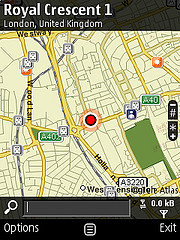
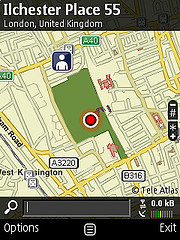
GPS OFF GPS ON
Now for the same with Google Mobile maps
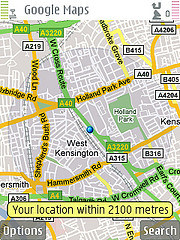
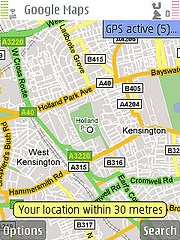
GPS OFF GPS ON
Now Nokia have joined Google in confirming that Operator Independent Location (OIL) is a viable proposition. While this may seem counter-intuitive for Nokia, given their decision to add GPS to new handsets, and their purchase of Navteq, all handset manufacturers admit that not everyone will buy a new GPS enabled phone straight away. If Nokia are to be able to recover their estimated 8Bn Navteq acquisition, they will need to sell a lot of map subscriptions.
When I travel, I use both GMM and Nokia Maps, but if in a foreign country, I stick to Nokia Maps as I can pre-load detailed maps of the entire country I am visiting for free (I only pay them if I want to navigate the streets). With GMM, while the maps look better, I have to pay the local operator’s data charges to view them – so I rarely use GMM when roaming. I have used the GMM my location feature though to get a rough fix on where I am. Now that Nokia maps have this feature as well, I may stick to Nokia Maps.
As with any operator independent location play, Nokia will now face the issue of keeping the BSA up to data as operators change their network, and hence Cell-ID numbers.
See an earlier post on how these issues may be overcome using zone detection.
Now that Google has a direct competitor for network location, we may find that the value of the cell-ID databases being developed by both Google and Nokia take on an increased value. This may mean that 3rd party access to them will be restricted as they hold an inherent value to Google and Nokia.
The existence of open-source cell-ID databases such as www.opencellid.org prove that there is a desire in the mobile applications community for access to this location information, but sadly the territory that must be covered to make these open-source databases viable is beyond the resources of the average developer.
Google and now Nokia have a commercial cell-ID database of enviable quality. Will these become the defacto standards for network location, forcing the operators to start selling access to their cell-ID lists, rather than expensive transactions on their cell-ID platforms?
Perhaps now location can be seen as inventory – a subject I will tackle in an upcoming post – stay tuned.
Like what you read here? Why not sign up to receive the RSS feed and have new posts delivered as they happen. The full feed address is https://londoncalling.co/feed